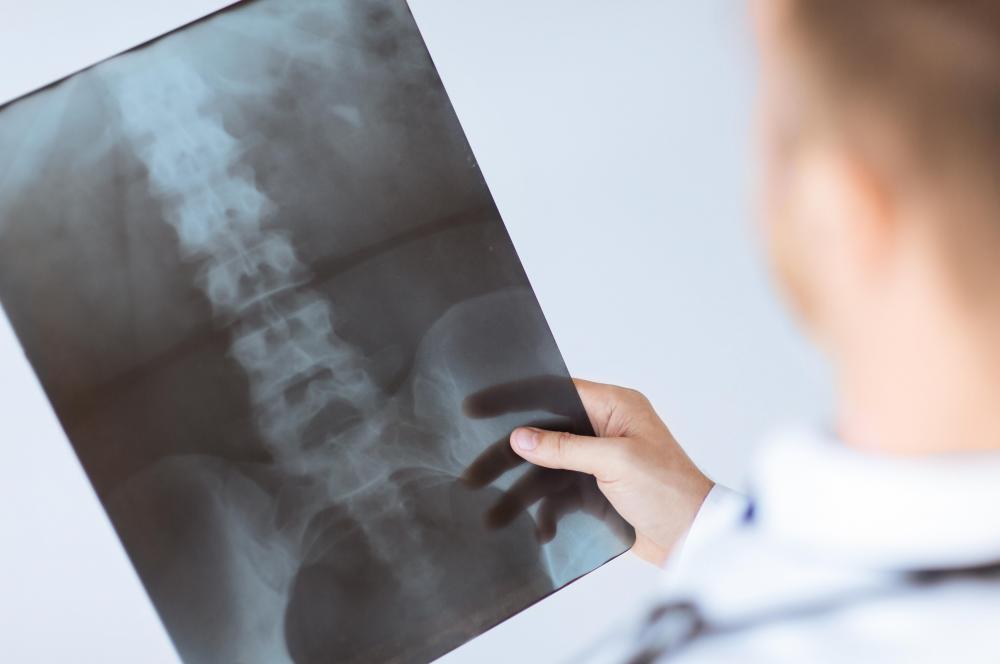At WiseGEEK, we're committed to delivering accurate, trustworthy information. Our expert-authored content is rigorously fact-checked and sourced from credible authorities. Discover how we uphold the highest standards in providing you with reliable knowledge.
What is an Aneurysmal Bone Cyst?
An aneurysmal bone cyst is a bone lesion that, while benign, can grow rapidly and potentially destroy bone tissue. Cysts can cause bone pain, bone deformity and other symptoms that depend on their location. These cysts are termed aneurysmal because when viewed on an X-ray, the cysts resemble aneurysms. Aneurysmal bone cysts are rare; between 1 percent and 6 percent of all bone tumors are of this variety.
Although these cysts can grow in any bone of the body, the most likely locations for an aneurysmal bone cyst to grow are the limbs, bones of the knee and the spinal vertebrae. They are more common in teenagers than other age groups, with as much as 86 percent of cysts developing in people younger than 20 years old. The average age of these patients is 13 to 17 years old, but cysts can develop in people of any age.

The underlying cause of aneurysmal bone cysts is unknown. Some develop in areas where bone trauma has previously occurred, and others occur in conjunction with other types of benign or malignant bone tumors. Still others develop in the absence of any other disease or trauma.
The development of an aneurysmal bone cyst does not always cause symptoms. In some people, the cysts remain small, and no symptoms ever develop. In such cases, the cysts are discovered only when an X-ray is carried out for an unrelated reason.

When symptoms appear, they commonly include pain, swelling and lump formation at the cyst site. When the cyst is located near a joint, it might cause reduced range of motion or joint stiffness or weakness. Some cysts grow rapidly and cause bone tissue to weaken, leading to increased risk of a fracture. If the cyst grows in the spinal bones, it might cause neurological symptoms.

When necessary, the treatment of aneurysmal bone cysts generally includes surgery to remove the cyst and to repair the affected bone. The most common treatment is curettage of the cyst followed by bone grafting. Curettage means that the cyst is opened, and the contents are scraped out with a scooped instrument called a curette. Once the cyst has been emptied, it is filed in with a bone graft or a synthetic filler.

Although curettage is the most common treatment, it has the highest potential for recurrence, because of the difficulty of removing all of the contents of the cyst. Cryotherapy, which is cold therapy, is sometimes performed after curettage to reduce the likelihood of a recurrence, but this procedure can cause bone fractures or nerve damage and therefore is not a common treatment. When an aneurysmal bone cyst is located in a non-weight-bearing bone, it can be removed via complete excision rather than curettage of the interior. Completely removing the cyst also reduces the risk of recurrence.
Surgical treatment is not always required. Generally, if a cyst is not growing or is growing very slowly, it is not treated. In these cases, the patient is monitored for signs that the rate of cyst growth is increasing. This might include regular CT scans or MRI scans to evaluate the size of the aneurysmal bone cyst.
AS FEATURED ON:
AS FEATURED ON:














Discuss this Article
Post your comments